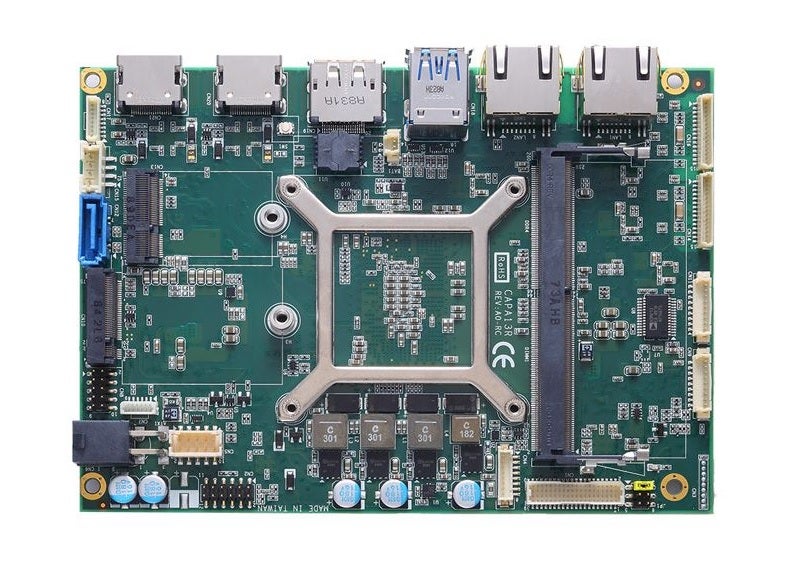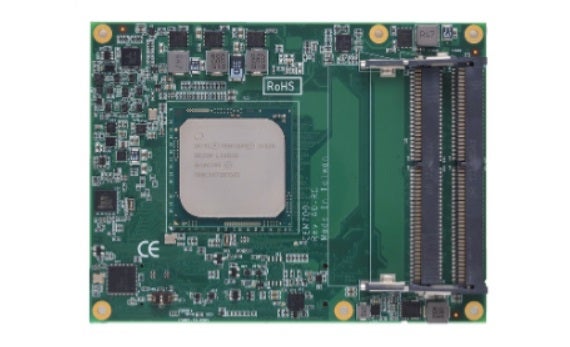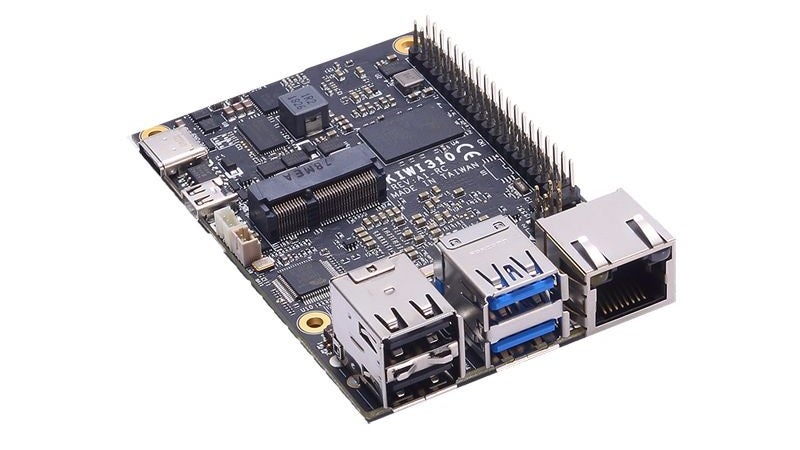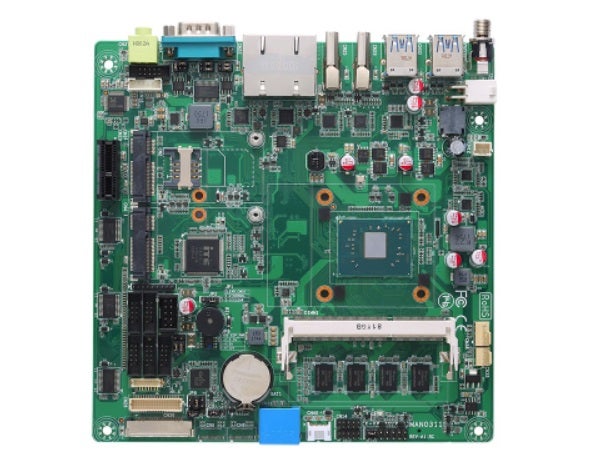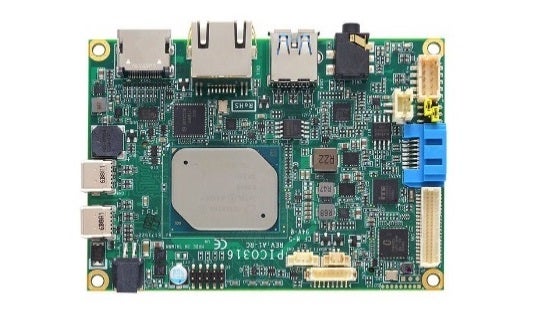Blogs & Articles
Choosing The Most Powerful Embedded Single Board Computer

The difference between a single-board computer and a traditional computer
As the name suggests, an Embedded Single Board Computer is a computer with all its components built on a single board. Typically, this would mean the Memory function (RAM), the Microprocessor, the I/O (Input/Output) are all represented on one board. Having everything integrated makes the device lighter, more compact and much more reliable than standard computers. They can be produced in a shorter amount of time, making it an attractive commercial proposition.
Why The Environment Is Important
One important reason to consider an Embedded Single Board Computers would be its deployment environment and its actual intended use. The choice of which device to eventually choose rests squarely on these factors. If the device is to be for a non-critical function or project with less importance attached to a system failure, say at home, you may not need an Embedded SBC. Therefore, before beginning any project, always weigh the eventual desired outcome against these two factors to arrive at right solution, but for any other application you are going to need an Embedded option.
Consider Its Performance
There is no, one size fits all, when it comes to choosing an Embedded Single Board Computer. Your final selection comes down to crunching the volume and type of data to be processed. Embedded SBCs are capable of tremendous computing power to handle complex application needs. Eventually the raw power of the desired performance has a direct bearing on the device’s design- whether it’s in its ability to handle data, connectivity, memory, thermal design, and its mechanical footprint. A thorough assessment of the application performance will lead you to the correct computing platform that will help you arrive at the desired outcome.
Is it cool enough?
Embedded Single Board Computers operate within confined spaces and with poor ventilation. They also need to optimally be within a range of temperatures which can swing from extreme cold to where the ambient heat is much higher. The device thus, needs to sturdy, versatile and be able to operate across a wide range of extremes. It is for this reason that unlike standard commercial computers, Embedded Single Board Computers can tolerate temperatures between -40 C degrees to +85 C degrees. This allows them to be used in different environments and is an important factor in their greater acceptance and approval in certain industrial settings.
Where Heat Sinks Fail, Heat Spreaders Are an Option
Computers tend to generate heat during functioning. It is for this reason that most Fanless Embedded PCs and Embedded SBC come with a heatsink which allows passive convection cooling of the device. Heatsinks are flat or moulded on one side of the device generating heat, with fins on the other side to allow cooling. Heatsinks however, need space around the device to function optimally and an Embedded Single Board Computer is usually housed in a small box or cabinet. This can lead to even more heat being circulated in the surroundings. There is an option for the Embedded SBC, in that of a heat spreader. Instead of fins, heat spreaders have flat aluminium ‘spreads’ which actually conducts the heat generated onto whichever surface surrounds the device. This allows the entire container or confined box to become a larger heatsink instead of trapping the heat within. Thus, heat spreaders are designed for more efficient thermal management.
What’s On Display?
What kind of display will you need in your Embedded Single Board Computer? This is a question that needs to be asked early on in the selection process. The standard display option found on the Input/Output plate of the board may not serve your purpose when embedding the single board computer inside a product or an OEM. The confined space inside will not allow the standard option to function optimally. For these specialised products, you need to get a TFT LCD display panel. Another important factor to consider is, which embedded display connection do you get for the TFT LCD panels.
They usually come in different formats; ranging from Low Voltage Differential Signalling to Embedded DisplayPort (eDP) which has less complex cabling and consumes less power. The final decision will depend on the environment and operating conditions.
Think About What You Are Connecting
An Embedded single board computer has the I/O, along with all other components, on one board. The space available is thus restricted and certain choices need to be made, especially when it comes to choosing the form factor. The most common form factors available on the market are PICO, ATX, COM Express, SMARC and Q7 sized System on Modules (SOMs) which are designed to plug into a carrier board via a high density connector and the I/O are then provided from the carrier board. Typically, an I/O is represented by different connecters on the board. Thus, if the I/O density increases, you will need smaller, high density connectors like DB9 for Serial, USB and even RJ45 for Ethernet, which are not commonly available. This in turn may force you to design your own cable kit or reach out to your Embedded SBC vendor. Custom cable kits add more time, costs and complexity and you should be aware of these variables when selecting the perfect Embedded Single Board Computer for your requirements.
Make Plans For Expansion & Storage
Finally, when choosing an Embedded Single Board Computer, keep in mind the possibility of expansion and storage. Most likely, as the device gets bigger the expansion possibilities can also increase. As most modern boards use the same Bus for both expansion and storage, this allows you to manage the space optimally on a smaller area. The mPCIe expansion slots, to give you an example, are not just used for adding connectivity expansion cards like WiFi and Cellular, but also, with storage in the form of mSATA SSDs. Variants of the newer M.2 format expansion cards are constantly finding their way into the market, which is good news for users.
How To Choose The Most Powerful Embedded Single Board Computer
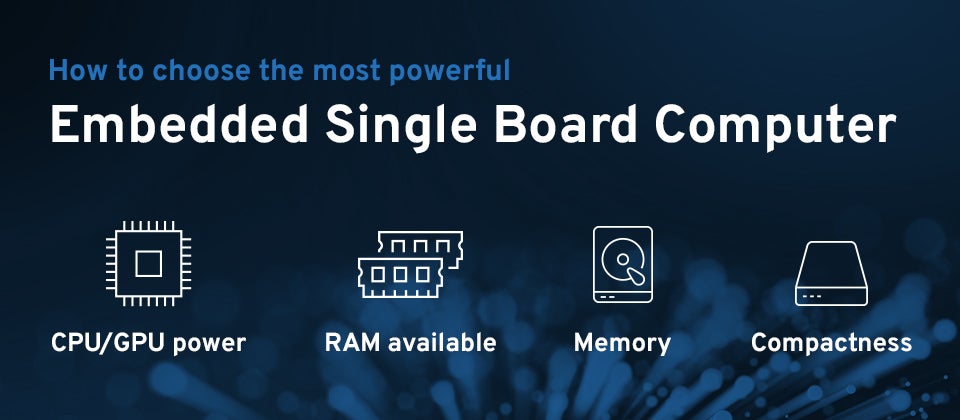
The factors that go into making an informed choice about a Single Board Computer for your needs are exhaustive and need to be carefully considered before making a final decision. Ranging from the volume and type of data needed to be processed, the operating environment, connectivity, along with the industry and the application for which it is intended, - choosing an Embedded Single Board Computer is a series of carefully thought-out steps, rather than an impulsive decision. Typically, the most important factors will come down to CPU/GPU power, the RAM available, Memory and Compactness. Study each of these factors carefully and compare the options available before making your decision.
CAPA13R - AMD RYZEN embedded V1807B APU
CEM700 - Xeon & Pentium D-1500
KIWI310 - 1.8” SBC Celeron® N3350
MANO311 - Celeron N3350 CPU
PICO317 - Pico-ITX SBC Atom® x5-E3940
Tekdis offers a range of embedded computing boards from respected Taiwanese manufacturers Axiomtek and IEI Technology. To know more about our range, get in touch with our customer support team.



